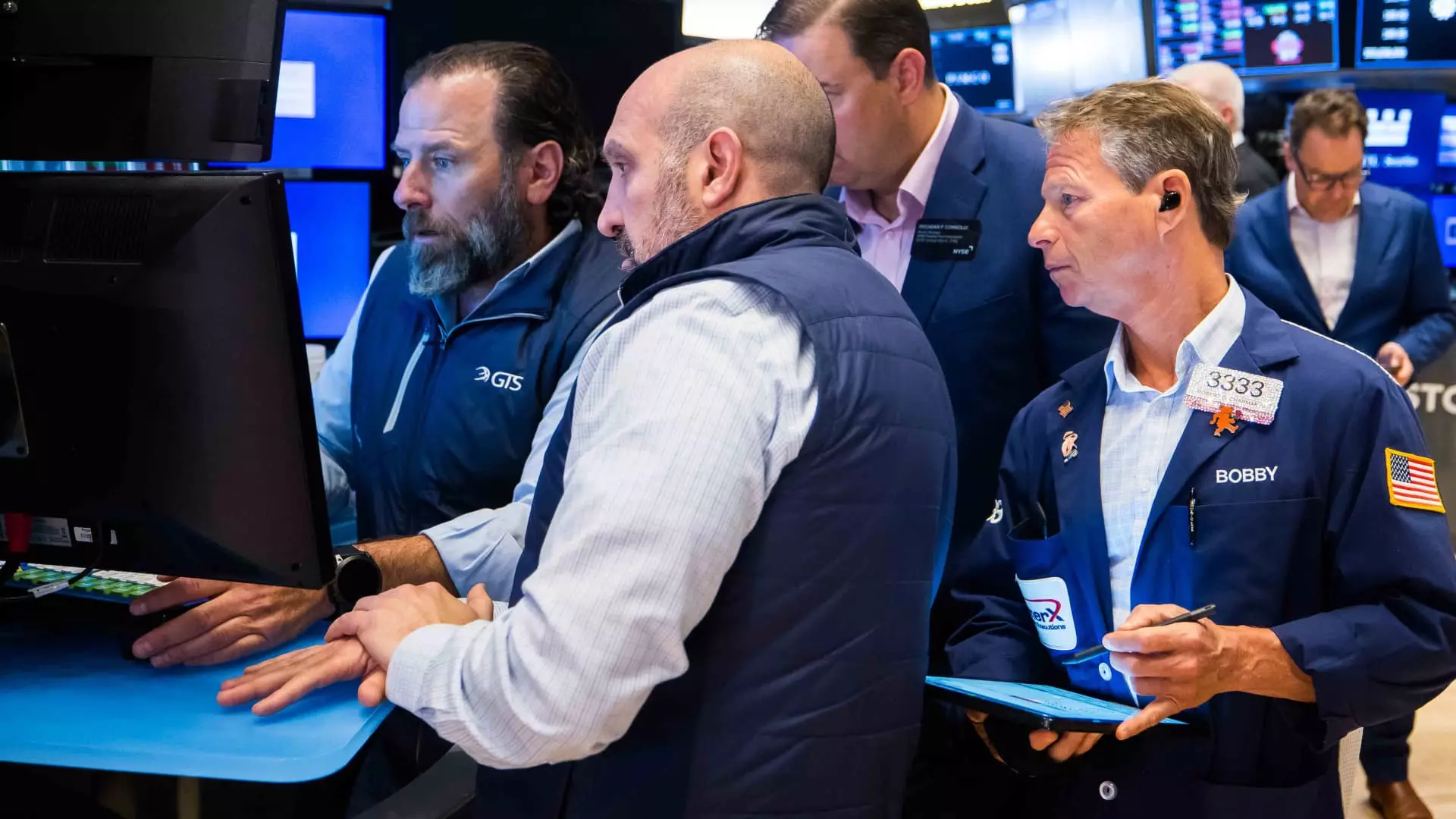The recent panic on Wall Street, marked by significant sell-offs and burgeoning Treasury yields, reflects a sense of unease gnawing at the heart of American financial stability. Last Wednesday, the stark drop of 745 points in the Dow Jones Industrial Average is not just a number; it’s a profound indicator of pervasive investor anxiety. With the S&P 500 and Nasdaq also tumbling, the mood on trading floors has transitioned from hesitant optimism to stark pessimism, as traders grapple with the implications of a nascent budget bill that threatens to escalate the already appalling U.S. deficit.
Instrumental to this fracas is the 30-year Treasury bond yield, which surged to an alarming 5.08%, the highest we’ve seen since October 2023. This spike in yields—driven by fears that lawmakers might exacerbate current fiscal woes—has set the stage for a broader conversation about the sustainability of American financial policy. The 10-year Treasury note yield following suit at 4.59% hints at a creeping skepticism among investors about the government’s fiscal prudence.
Investors on Edge: Policy Implications
The situation is further complicated by a looming budget bill, projected to sail through Congress due to a delicate compromise on state and local tax deductions. Yet, it’s troubling that passing this legislation could merely serve as a temporary band-aid, glossing over the fundamental issues driving our nation’s burgeoning debt. The increasing yields indicate a fear that rather than addressing the root causes of inflation and public debt, the government is simply rearranging the deck chairs on the Titanic.
Sam Stovall, chief investment strategist at CFRA Research, captures the zeitgeist perfectly when he states that investors are questioning whether the way forward will be sustainable. Will this tax bill merely slow the debt accumulation, or will it potentially cascade into an even larger fiscal catastrophe? This is a critical juncture—a moment that could either steer us towards economic recovery or plunge us deeper into uncertainty.
The Tariff Trap: A Perfect Storm?
The backdrop of heavy tariffs announced during Donald Trump’s presidency continues to play an integral role in shaping investor sentiment. Last month’s spike in Treasury yields, fueled by concerns over tariffs undermining the credibility of U.S. debt, speaks volumes about how interconnected these issues have become. The recent reassessment of Target’s full-year sales outlook, reflecting anxieties surrounding tariffs and diversity policies, begs the question of how deep these financial ripples can reach. Each corporate misstep becomes a harbinger of broader economic instability, further heightening market vulnerability.
In large caps like UnitedHealth—suffering losses exceeding 5% after a downgrade—the reverberations of these fiscal uncertainties create a feedback loop affecting major industry players. Tech stocks, which once offered a refuge in troubled waters, are being swept into the waves of rising rates and investor jitters. The market healing that followed last month’s downturn feels fleeting as we are reminded of the fragility that defines our economic landscape today.
The Market’s Upward Trajectory: A False Dawn?
It’s worth noting that while the S&P 500 and Nasdaq have registered impressive gains of more than 14% and 19% respectively over the past month, this optimism is marred by a palpable sense of caution among investors. Stovall’s observation that some believe we have surged “too far, too fast” encapsulates the precariousness of current market dynamics. This digital age of investing thrives on momentum, but one can only wonder: Are we merely setting ourselves up for a correction?
Amidst this atmosphere of uncertainty, a dichotomy emerges—between short-term gains and long-term viability. The allure of quick profits can often overshadow the necessity of sustainable fiscal strategies. As market participants continue to navigate these choppy waters, the overarching question remains: Can we trust a financial infrastructure that appears ever more susceptible to destabilizing governance and inconsistent policy measures?
The haunting specter of an unmanageable deficit looms large, serving as a reminder that behind each point dropped on the Dow or percentage lost in the S&P, real economic futures hang in the balance. The question isn’t just what happens next week in the markets, but rather how this moment will redefine the economic narrative going forward. The stakes are uncomfortably high, and the implications of policy decisions extend far beyond Wall Street.


Leave a Reply